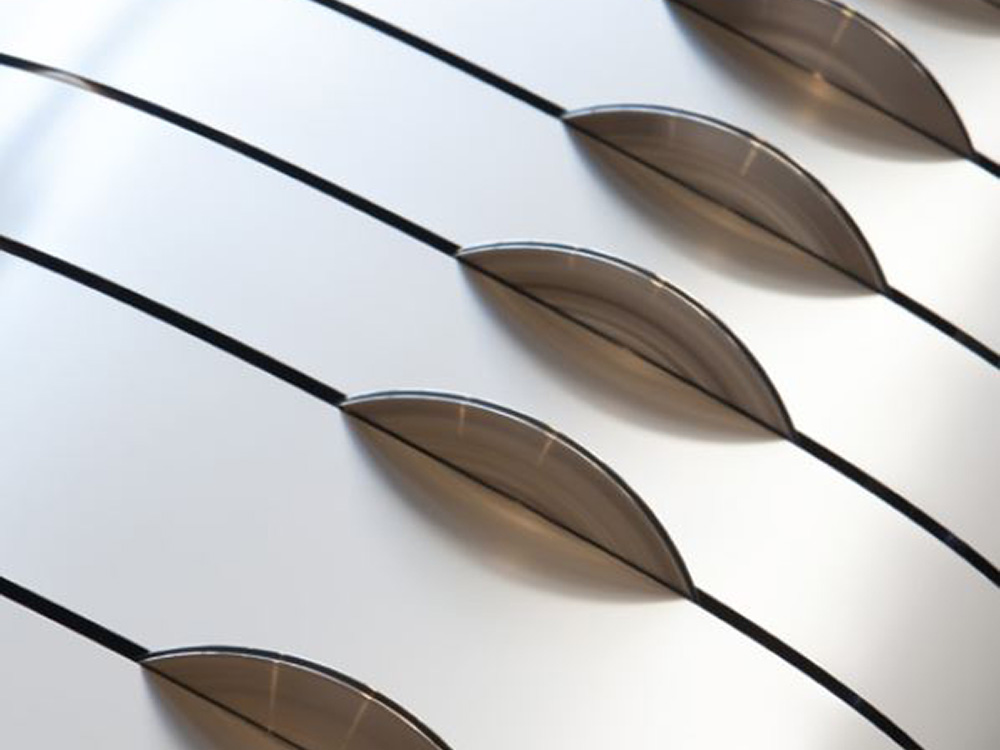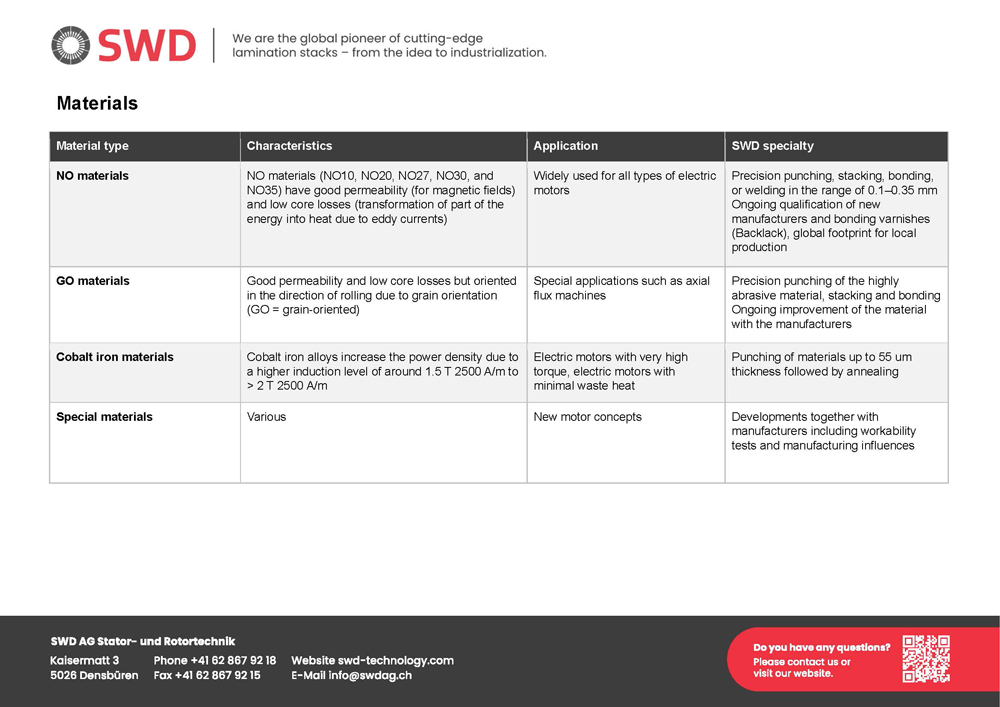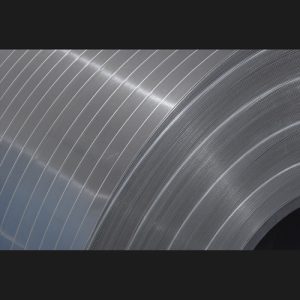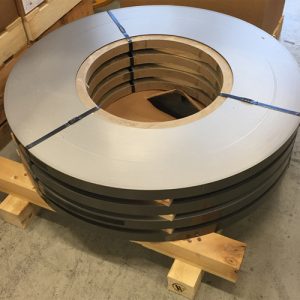Materials: Electrical sheet materials from 0.35 mm to 0.05 mm
We are constantly advancing the development of electrical sheet materials. Together with the manufacturers, we test the usability of new materials and coatings. We are looking for the optimum balance between magnetics and processability. In addition to classic electrical sheet, we also successfully punch cobalt or nickel iron or grain-oriented electrical sheet. We process electrical sheet materials NO10, NO15, NO20, NO27, NO30, and NO35 as well as GO20 material in series manufacturing.

Feasibility studies for electrical stacks thanks to new tooling concepts
We have developed and implemented new tooling concepts for electrical stacks for processing thin or grain-oriented electrical sheet materials. New materials, together with our tooling concepts and machine technologies, make new solutions possible.
Continuous expansion of bonding varnish (Backlack) variants
We are not only concerned with the material itself, but also with its coating. Bonding varnish (Backlack) is currently only available in a few variants, but is now being continuously expanded. We are working with various manufacturers on further developments to improve lamination stacks and the creation of prototypes for test series.
We process our expertise in materials
- NO10, NO15, NO20, NO27, NO30, and NO35 into lamination stacks in large series.
- We punch large quantities of cobalt and nickel iron as laminations (these are then annealed).
- We process GO20 (grain-oriented material) into lamination stacks in large-scale series manufacturing.
- We use our technologies to process materials from various European and Asian manufacturers in series manufacturing.

We continuously refine this expertise to drive innovation in high-performance lamination stacks.
Our goals for further development
- Lower bonding temperatures
- Shorter cycle times
- Thinner coating thickness
- Higher stacking factor
- etc.
The focus is always on improving the electric motor.
What our employees have to say:
“We are constantly qualifying new suppliers, materials, and coatings – all over the world.”

Karsten Richter
CTOFAQ – Looking for answers?
In order to determine precisely the mechanical strength of our bonded segments, we have specially adapted the three-point bending test.
In this test, the segment is supported at both ends and loaded in the middle until it breaks. The bending moment is then calculated from the measured breaking force and the distance of the breaking from the end.
Using this method, we achieve breaking strengths of over one ton and bending moments exceeding 100 Nm for individual teeth – impressive values for such compact components.
Yes – when using bonding varnish (backlack) technology, materials from different suppliers can generally be processed without issue.
In some cases, machine parameters such as pressing force, temperature profiles, heating ramps, or holding times may need to be adjusted to match the specific material characteristics.
This is, however, easily manageable: we have extensive experience with a wide range of bonding varnish-coated materials from various manufacturers, many of which have proven their reliability in series production.
The stacking factor, also known as the iron fill factor, is primarily influenced by the sheet thickness and the coating thickness of the bonding varnish (Backlack) layer.
Other critical factors include stack height tolerance, available installation space, and the lamination method. All of these directly affect the magnetically active material in the final motor.
Thanks to our extensive experience, we can systematically optimize these parameters. We can carry out 100% weight-based inspections, which enables us to precisely determine and document the stacking factor, ensuring maximum process reliability and efficiency.
Our specialist will be happy to answer any questions you may have.
Fact box
- Electrical sheet materials from 0.35 mm to 0.05 mm
- Materials NO10, NO15, NO20, NO27, NO30, NO35, and GO20
- Industrialization in lamination stack manufacturing




